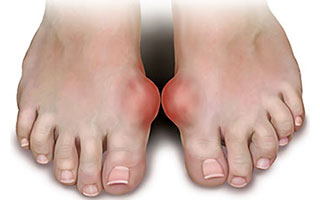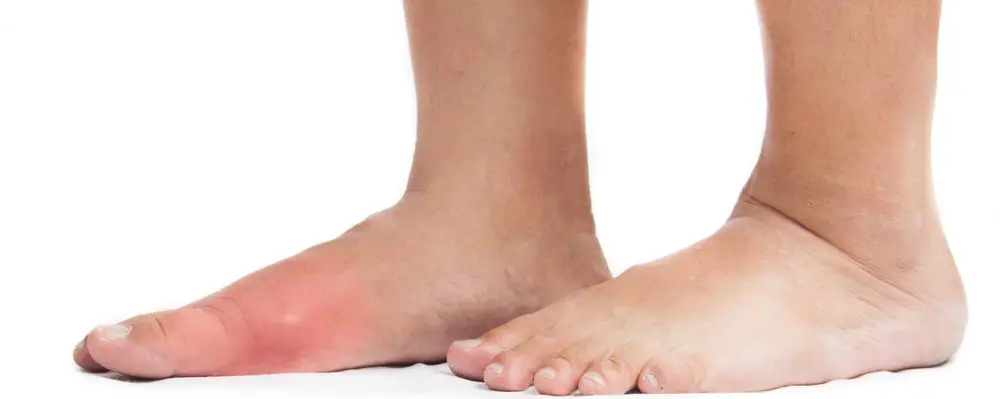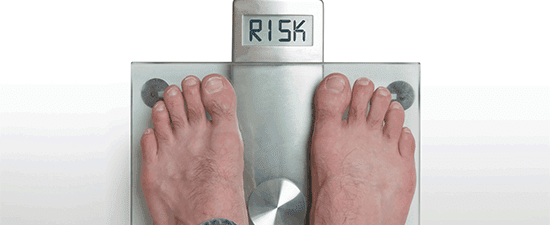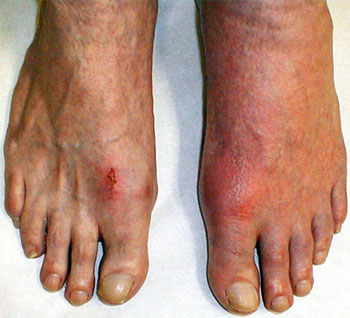Gout: causes, symptoms & treatment
- Published 6/1/2018
- Last Reviewed 10/10/2024

What is gout?
Gout is a type of arthritis that affects the musculoskeletal system, better known as your bones, joints, and muscles. It results from a build-up of uric acid in the joints. When there’s an excess of uric acid in the blood, it crystallizes in the joints, usually the big toes.
The most common gout symptoms include redness, tenderness, swelling, and pain.
- What does gout feel like?
- What causes Gout?
- Why are the big toes usually affected in a gout attack?
- How is gout diagnosed?
- How do you treat gout?
- The link between gout and heart disease
- Searching for a gout specialist near me? UFAI is the right choice for your gout treatment
- Gout FAQs
- What does gout look like?
- What foods cause gout?
- Is gout an autoimmune disease?
- Does walking on gout foot make it worse?
- Does gout go away on its own?
- How long does gout attack last?
- Is gout contagious?
- What are some tips to prevent gout flair-ups?
-
ABFAS® Board Certified in Foot and Ankle Surgery and Co-Director of University Foot and Ankle Institute
Board-Certified Podiatric Foot and Ankle Specialist, Dr. Gary Briskin, DPM, FACFAS, began his medical training by serving a residency at Flint General Hospital in Michigan. Once completed, he established a practice in Century City Hospital, where he soon became chief of podiatric surgery.
Dr. Briskin is a Diplomat of the American Board of Podiatric Surgery and a Fellow of the American College of Foot and Ankle Surgeons. He also serves as an assistant clinical professor at the UCLA School of Medicine and is co-founder and co-director of University Foot and Ankle Institute.
Read Our Blog Articles About Gout
 I was glad to have found the University Foot & Ankle Institute as I was having trouble with a bone spur that needed attention. ...Raymond S.
I was glad to have found the University Foot & Ankle Institute as I was having trouble with a bone spur that needed attention. ...Raymond S. Great care, I will return.Linda F.
Great care, I will return.Linda F. Terrific…couldn’t be happier!Joan G.
Terrific…couldn’t be happier!Joan G. As usual, the service as staff was excellent.Leroy H.
As usual, the service as staff was excellent.Leroy H. Please provide handicap parkingBarry S.
Please provide handicap parkingBarry S. Dr. Ambibola Johnson is awesome!Laurie S.
Dr. Ambibola Johnson is awesome!Laurie S. I appreciate the care and timeliness of all my appointments I’ve had at UFAI. Gray, Lydia and the staff all are wonderful. Lydi...Edelmira G.
I appreciate the care and timeliness of all my appointments I’ve had at UFAI. Gray, Lydia and the staff all are wonderful. Lydi...Edelmira G. Extremely friendly staff. Very professional. Always on time.Jim C.
Extremely friendly staff. Very professional. Always on time.Jim C. A few months ago, I visited Dr. Baravarian for a foot ailment that I had been suffering from for a few years. After a couple of...Tory R.
A few months ago, I visited Dr. Baravarian for a foot ailment that I had been suffering from for a few years. After a couple of...Tory R. Very greatfull for the doctor and stuffJesus M.
Very greatfull for the doctor and stuffJesus M. Doctor was very caringBrigitte S.
Doctor was very caringBrigitte S. Everyone is very nice and efficient-
Everyone is very nice and efficient-
Especially Dr Kelman. He takes very good care of me!!Claudia K.
-
 Listen Now
Got Big Toe Bumps and Lumps? Here’s 5 Things You Need to Know
Read More
Listen Now
Got Big Toe Bumps and Lumps? Here’s 5 Things You Need to Know
Read More
-
 Listen Now
How Carrying Extra Weight Affects Your Feet and Ankles
Read More
Listen Now
How Carrying Extra Weight Affects Your Feet and Ankles
Read More
-
 Listen Now
Got Gout? 16 Tips to Prevent or Better Deal With Gout
Read More
Listen Now
Got Gout? 16 Tips to Prevent or Better Deal With Gout
Read More
-
 Listen Now
Is there a link between gout and heart disease? Studies Say Yes
Read More
Listen Now
Is there a link between gout and heart disease? Studies Say Yes
Read More





